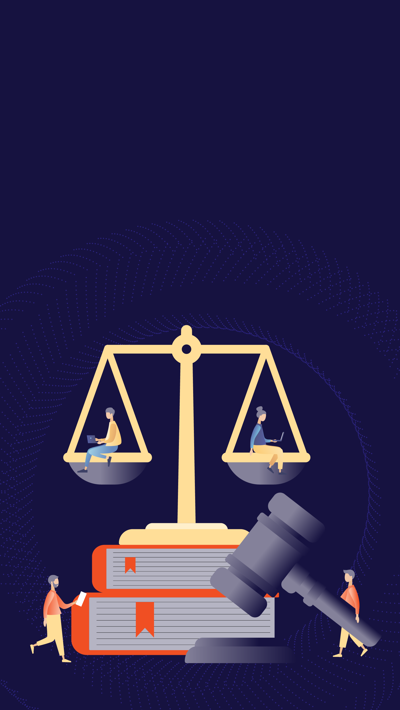Contents
The insolvency law package announced by the Government in April has now been passed, with a number of small improvements made during the legislative process.
It provides a life support machine for businesses which would have been healthy but for COVID-19 and still have a realistic prospect of survival. Most of the changes come into effect immediately.
The key components are:
- a temporary “safe harbour” for directors of companies facing significant COVID-19 generated liquidity problems
- a Business Debt Hibernation (BDH) regime, enabling businesses to place existing debts on ice until they can start trading normally again
- reduction from two years to six months of the voidable transactions claw-back period (where the parties are not related), and
- deferral of the new insolvency practitioner licencing regime (due to start in June) for up to 12 months, if required.
Directors’ duties – safe harbour
The Government has introduced a “safe harbour” for directors having to make difficult decisions in light of COVID-19 about trading on and taking new obligations. Over the next six months, a director’s actions will not breach the reckless trading and incurring obligations duties (sections 135-136 of the Companies Act) if:
- the company was able to pay its debts as they fell due on 31 December 2019 (or was incorporated between 1 January 2020 and 3 April 2020)
- in the good faith opinion of the director:
- the company has, or in the next six months is likely to have, significant liquidity problems, which are a result of COVID-19, and
- it is more likely than not that the company will be able to pay its due debts on and after 30 September 2021. In assessing this, the directors may take into account the likelihood of trading conditions improving, the likelihood of a company reaching a compromise or other arrangement with its creditors, or any other relevant matters.
The new safe harbour should give directors the confidence to trade on an otherwise viable business. But directors must continue to make any such decisions carefully, based on sound reasoning and evidence. Such reasons and evidence should be recorded, and directors should also obtain professional advice as needed.
The addition of a new “purpose” clause to the legislation makes it clear that directors will not be able to rely on the safe harbour where the company has no realistic prospect of continuing to trade in the medium to long term, and deferring liquidation will be to the detriment of creditors.
Points of note:
- The safe harbour applies to decisions made after 3 April 2020 (when the changes were announced). Submissions, including from Chapman Tripp and RITANZ, suggesting changing that date to 25 March 2020 (the start of Alert Level 4) were not accepted.
- The safe harbour is time-limited, set to expire on 30 September 2020. But Ministers can make regulations which would allow that date to be extended to 31 March 2021, or potentially 30 September 2021 if a new safe harbour were subsequently created.
- Ministers also have the power to make regulations regarding to what companies the safe harbour applies. Currently, it does not apply to registered banks, licenced insurers, non-bank deposit-takers, and companies incorporated after 3 April 2020.
BDH regime
The BDH regime will give companies (and trusts and partnerships) breathing room to work with their creditors. Like the safe harbour, it should prevent the unnecessary liquidation of companies that were otherwise sound but for COVID-19.
The BDH regime allows a company to trigger an automatic one-month moratorium on enforcement of debts, capable of extension by a further six months if approved by a vote of credito.
Directors can agree to an entity entering into BDH if:
- the entity was able to pay its debts as they fell due on 31 December 2019
- at least 80% of the directors (acting in good faith) vote in favour of a resolution for the entity to enter into BDH, and
- each director voting in favour certifies that, as at 31 December 2019, the entity was paying its debts as they fell due, and in the director’s good faith opinion:
- the company has, or in the next 6 months is likely to have, significant liquidity problems, which are a result of COVID-19, and
- it is more likely than not that the company will be able to pay its due debts on and after 30 September 2021.
A company enters into BDH by delivering a notice to the Registrar of Companies of the directors’ decision. Creditors must be sent a copy of the notice as soon as reasonably practicable.
In that first month, the entity may propose an arrangement to its creditors to address its liquidity issues. A vote must take place before the end of that month, and the entity must provide sufficient detail to enable creditors to make a reasoned judgment. If approved by 50% of creditors, all creditors will be bound (save for some exceptions – see below) and the moratorium will be extended by up to a further six months.
Other key features of the BDH regime and points of note include:
- A general security agreement (GSA) holder may enforce at any time through both the initial month, and the period of any arrangement approved by creditors. That is an important and helpful clarification from the initial draft legislation. Prohibiting a GSA holder from enforcing would likely only result in an earlier appointment of receivers being appointed earlier, if the GSA holders risk losing that ability by waiting. Moreover, a debtor will almost certainly need the support of a GSA holder to enter into a successful arrangement with its creditors.
- The moratorium protections do not apply to certain “excluded” debts. Excluded debts include employee debts, as well as PAYE and similar deductions. They also include debts “incurred” after an entity enters into BDH. The intent is to ring-fence existing debts to give creditors room to breathe, but ensure that post-BDH debts are paid as they fall due.
- The post-vote moratorium remains six months but an entity may now exit BDH early if it wishes to do so.
- Payments made by a company in BDH will be exempt from the voidable transactions regime, as long as they were entered into in good faith, at arm’s length, and not with the intention of depriving existing creditors. That is intended to give counter-parties confidence to supply further goods and services. But charges given by a company in BDH are not exempt from the voidable transactions regime.
- Directors are no longer required to provide a statutory declaration about their opinions in relation to entry into BDH, as originally proposed. That is a sensible change and reflects general company law processes.
Voidable transactions – clawback period reduced
The legislation will reduce the voidable transaction claw-back period from two years to six months (where the parties are not related).
We expect that change will please many businesses, as it will significantly reduce the quantum of their potential voidable risk exposure.
From a wider insolvency law standpoint, we note that the proposed change does not follow the recommendation of the Insolvency Working Group (IWG) in 2017 that any change to the relation-back period be made in concert with a repeal of the ‘gave value’ part of the creditor’s defence in s 296(3)(c) of the Act. That latter part has not been adopted in the Bill.
Insolvency practitioner licencing regime to be deferred for up to 12 months
The legislation provides that the new insolvency practitioner regime may be deferred until 1 June 2021. Our view is consistent with RITANZ – any delay beyond the original 17 June 2020 date should be limited to only that which is absolutely necessary.
Future review of insolvency law
The Select Committee’s report noted that a post-COVID-19 review of insolvency law (including the directors’ duties in sections 135-136 of the Companies Act), would be warranted. We agree.











































































































